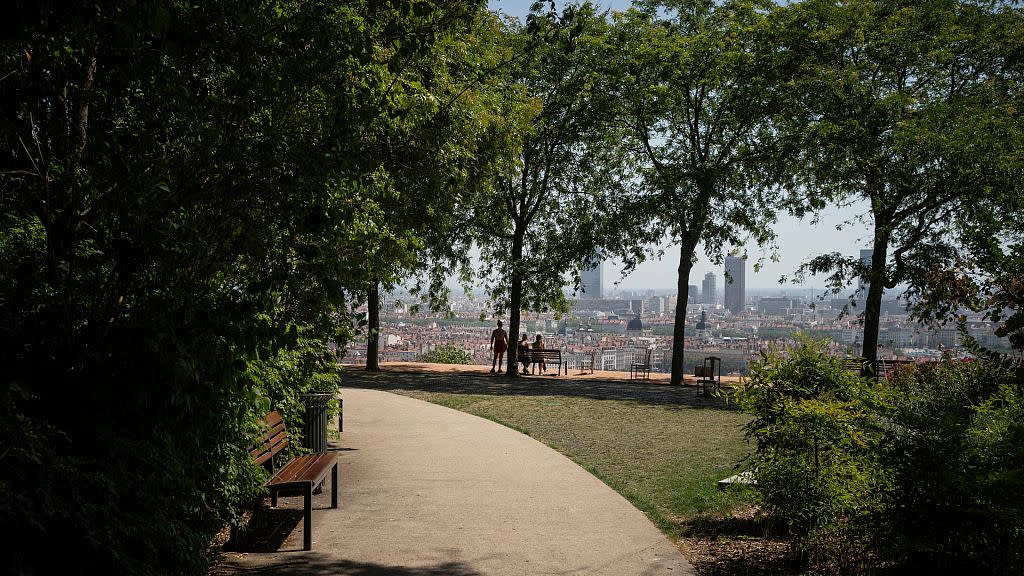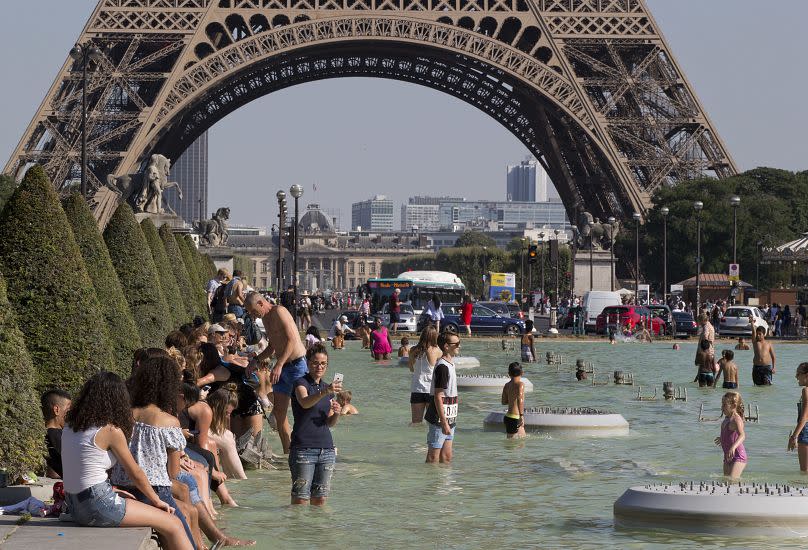91% of Europe’s cities are looking to nature-based solutions to fight climate change

Europe’s cities are facing the impacts of climate change ever more regularly and severely. After 2023’s record summer heat, flooding and heatwaves, the need to invest in resilience has never been clearer.
A new report from the European Environment Agency (EEA) has taken stock of adaption across Europe’s urban centres, looking at what actions cities are taking and what is already working.
It finds that almost all European cities are using nature-based solutions as their tool of choice to improve resilience. Of the 19,000 climate action plans surveyed, 91 per cent included options like maintaining parks, urban forests or green roofs and facilitating natural water retention.
Not only are they “effective for cooling and water retention”, the report says, they also provide other benefits like more recreational spaces or a reduction in pollution.
‘A minimally intrusive solution for urban cooling’: This paint could make cities feel 1.5C cooler
Meet the companies creating a ‘city of the future’ inside Berlin’s Tegel Airport
Despite the uptake in nature-based solutions, however, the EEA says the magnitude of expected climate impacts means it may still be necessary to combine them with other types of actions, including physical infrastructure. And concrete targets are desperately needed to make sure Europe’s urban centres stay on track.
Which European cities are adapting well?
“Capital and larger cities are usually frontrunners as they have great financial and technical capacities to work on adaptation, and may even be more ambitious than the national level on climate action,” says Ine Vandecasteele, an expert on urban adaptation at the EEA.
“However, it is not only larger cities that are taking good initiatives.”
She points to a few that stick out for their efforts. Ghent in Belgium, for example, has an ambitious greening strategy and is already limiting the construction of new buildings. Even if they are approved there is a ‘net-zero’ requirement that means an equal area of the city needs to be unpaved or converted back to green space.
Nantes in France is investing in becoming one of Europe’s greenest cities while still trying to remain affordable for residents. Rethymno, a coastal town in Greece, is investing in bioclimatic design in its public spaces, using compressed soil, permeable pavers and paint to effectively reduce maximum air temperature during heatwaves.
Parliament backs stricter limits for air pollutants, better monitoring
Worst wine harvest in 62 years blamed on ‘extreme’ weather and climate change
“On the flipside, smaller municipalities may need additional support from the regional and national level to be able to develop and implement effective adaptation strategies. In a good example of how to overcome these limitations from Piedmont, Italy, smaller municipalities are banding together to apply for funding.”
Though adaption needs to be tailored to the specific impacts felt in each city, Vandecasteele says similar places can learn a lot from each other.
“For example in tackling increasing heatwaves in southern European cities, or greater variability in rainfall and storms in western and northern Europe. There is a strong need for networking and peer-learning - best practices can and need to be shared.”
Adaptation, she says, also needs the support of citizens who should be involved in every step of the process.
Why do Europe’s cities need to adapt?
The EEA published the first-ever European climate risk assessment in March this year. It shows that current policies and adaptation actions aren’t keeping pace with rapidly growing climate risks - and urban areas are at particular risk from heatwaves and heavy rain.
Europe is the fastest warming continent with temperatures rising at roughly twice the rate of the global average. Almost three-quarters of the continent’s population is estimated to live in urban areas and cities can often be up to 10 to 15C hotter than the surrounding land.

With more to lose from the consequences of the world’s changing climate and a large section of the population to protect, the report highlights the “urgent need” to adapt European cities to climate change.
Is Russia ready for climate change? Mass floods expose lack of adaptation, campaigners say
These European countries could lose more than 30 days of comfortable weather a year by 2100
Cities need specific targets for climate adaptation
If actions taken at a local level are to be properly upscaled then tangible goals and specific targets are needed to measure progress, the report adds. Right now, there are none at national or European levels.
“Targets set by cities could be quite specific, for example ensuring that as much as possible of the population is covered by specific insurance where needed, that housing meets certain minimum energy efficiency standards, that rainwater is separated from greywater collection for all individual houses, or that all citizens have publicly accessible green spaces within a short walk of where they are living,” Vandecasteele explains.
“These are needed. But so is a better definition of what the overall goal is, further than ‘enhancing resilience’, so that actions can be upscaled and mainstreamed towards a more specific common goal.”

